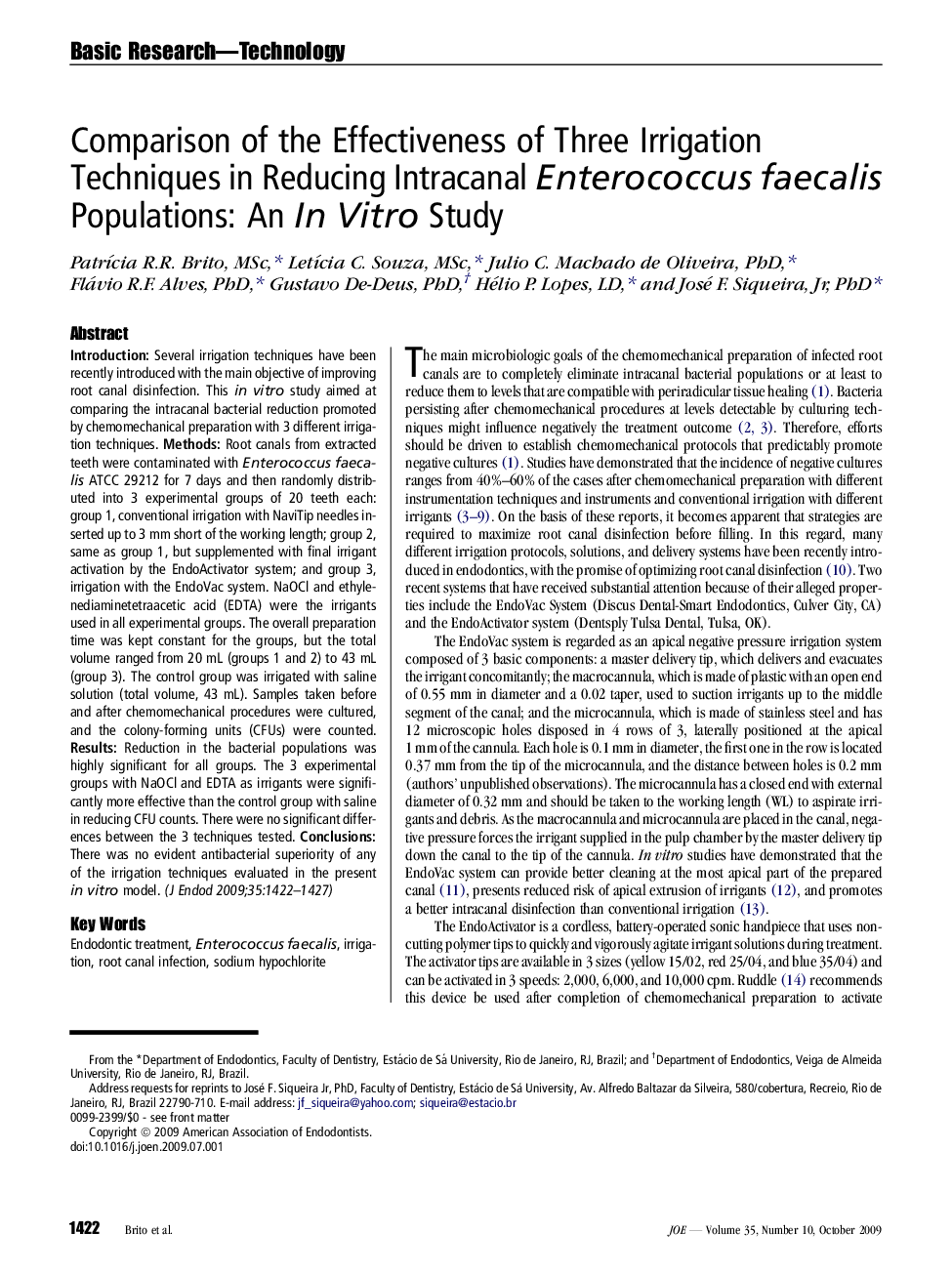| Article ID | Journal | Published Year | Pages | File Type |
|---|---|---|---|---|
| 3148389 | Journal of Endodontics | 2009 | 6 Pages |
IntroductionSeveral irrigation techniques have been recently introduced with the main objective of improving root canal disinfection. This in vitro study aimed at comparing the intracanal bacterial reduction promoted by chemomechanical preparation with 3 different irrigation techniques.MethodsRoot canals from extracted teeth were contaminated with Enterococcus faecalis ATCC 29212 for 7 days and then randomly distributed into 3 experimental groups of 20 teeth each: group 1, conventional irrigation with NaviTip needles inserted up to 3 mm short of the working length; group 2, same as group 1, but supplemented with final irrigant activation by the EndoActivator system; and group 3, irrigation with the EndoVac system. NaOCl and ethylenediaminetetraacetic acid (EDTA) were the irrigants used in all experimental groups. The overall preparation time was kept constant for the groups, but the total volume ranged from 20 mL (groups 1 and 2) to 43 mL (group 3). The control group was irrigated with saline solution (total volume, 43 mL). Samples taken before and after chemomechanical procedures were cultured, and the colony-forming units (CFUs) were counted.ResultsReduction in the bacterial populations was highly significant for all groups. The 3 experimental groups with NaOCl and EDTA as irrigants were significantly more effective than the control group with saline in reducing CFU counts. There were no significant differences between the 3 techniques tested.ConclusionsThere was no evident antibacterial superiority of any of the irrigation techniques evaluated in the present in vitro model.
